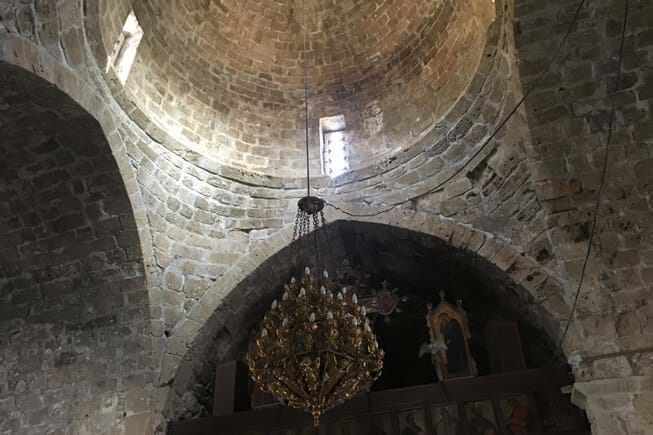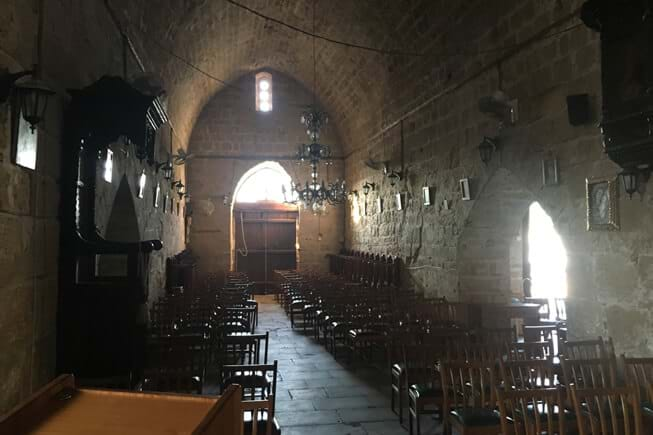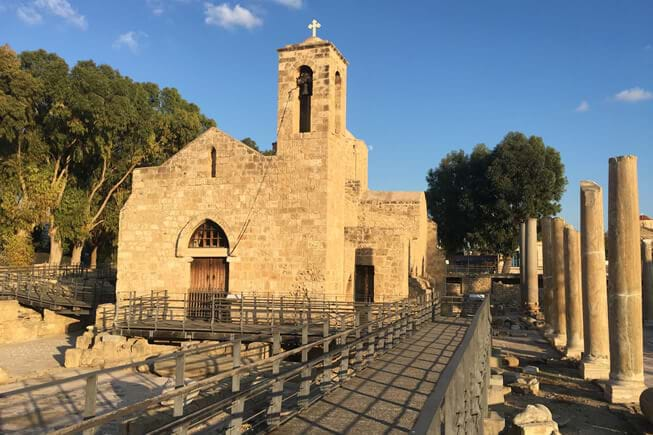The church of Agia Kyriaki was built in the fifteenth and sixteenth centuries. Currently it is used as a place of worship for the Roman Catholic and Anglican communities. Originally, it served as the cathedral for the Greek Orthodox church in Pafos. The church was built in two phases. First, it had a free cross shape with a dome in the apse. Later, a chamber was added in each corner of the cross, giving it the cross-in-square configuration. The stone structure includes an iconostasis, vaults, and wooden furniture. In the 1980s, archaeological excavation at its site revealed a complex history. The foundations of the much larger early Christian basilica, Chrysopolitissa, were laid bare along with mosaic floors, fragments of frescos, and remnants of its colonnades. Also discovered are the remains of the adjacent episcopal palace. The basilica was in use from the fourth century until the seventh, when destruction by Arab raids and earthquakes led to its abandonment. The rubble was exploited for other building projects, and two houses of worships were built and destroyed here before the construction of Agia Kyriaki. To enter the church, you will cross wooden walkways over the archaeological site. Placards along the walkway explicate the remains. St. Paul’s Pillar, where the apostle was reputedly flogged for proselytizing, is at the site, as is a memorial for King Eric of Denmark, who died here on a pilgrimage to Jerusalem in 1103. Visit and you will find the history of Christianity revealed layer by layer.


